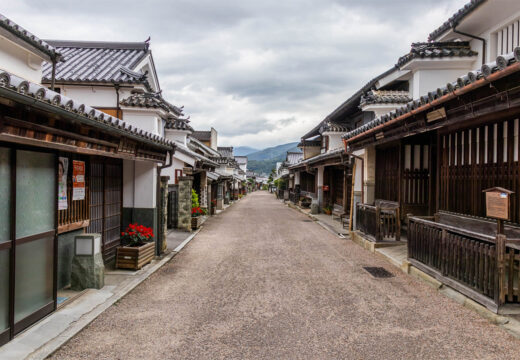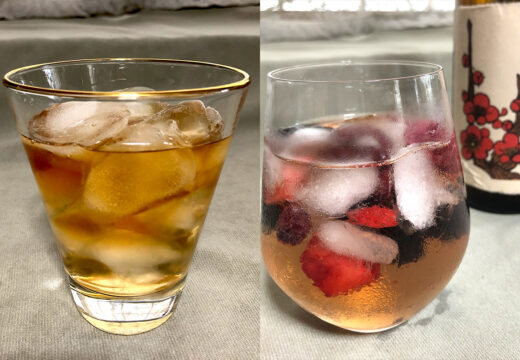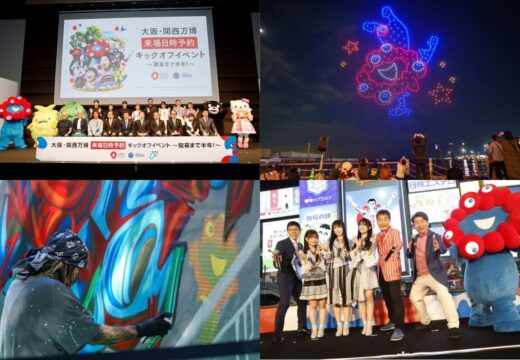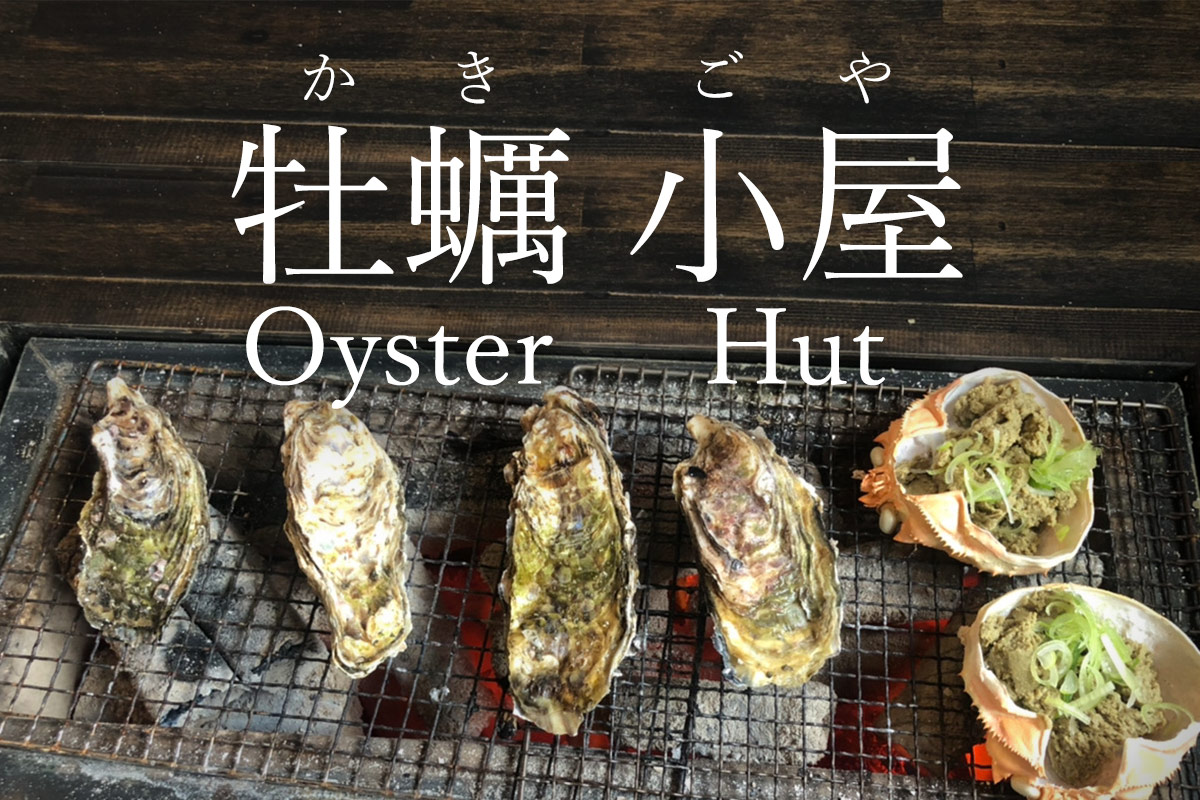
After exploring the hot springs and the nostalgic train station, we’ll eat some of the specialties of Nanao City, Ishikawa!
*Click here for the previous article.
Nanao City in Ishikawa is near the sea, and oyster farming is popular during the winter season.
When you drive along the coast… you can see oyster farmers everywhere!

In addition, there is a restaurant on the beach called “牡蠣小屋 (Kaki-goya)” where you can eat freshly picked oysters right away.
*牡蠣(Kaki)=oysters, 小屋(goya)=hut
This time I ate oysters at “Kaki-goya”!
Let’s roast our own oysters!
“Kaki-goya” restaurant is a style of eating where you place the oysters on the net and grill them yourself.
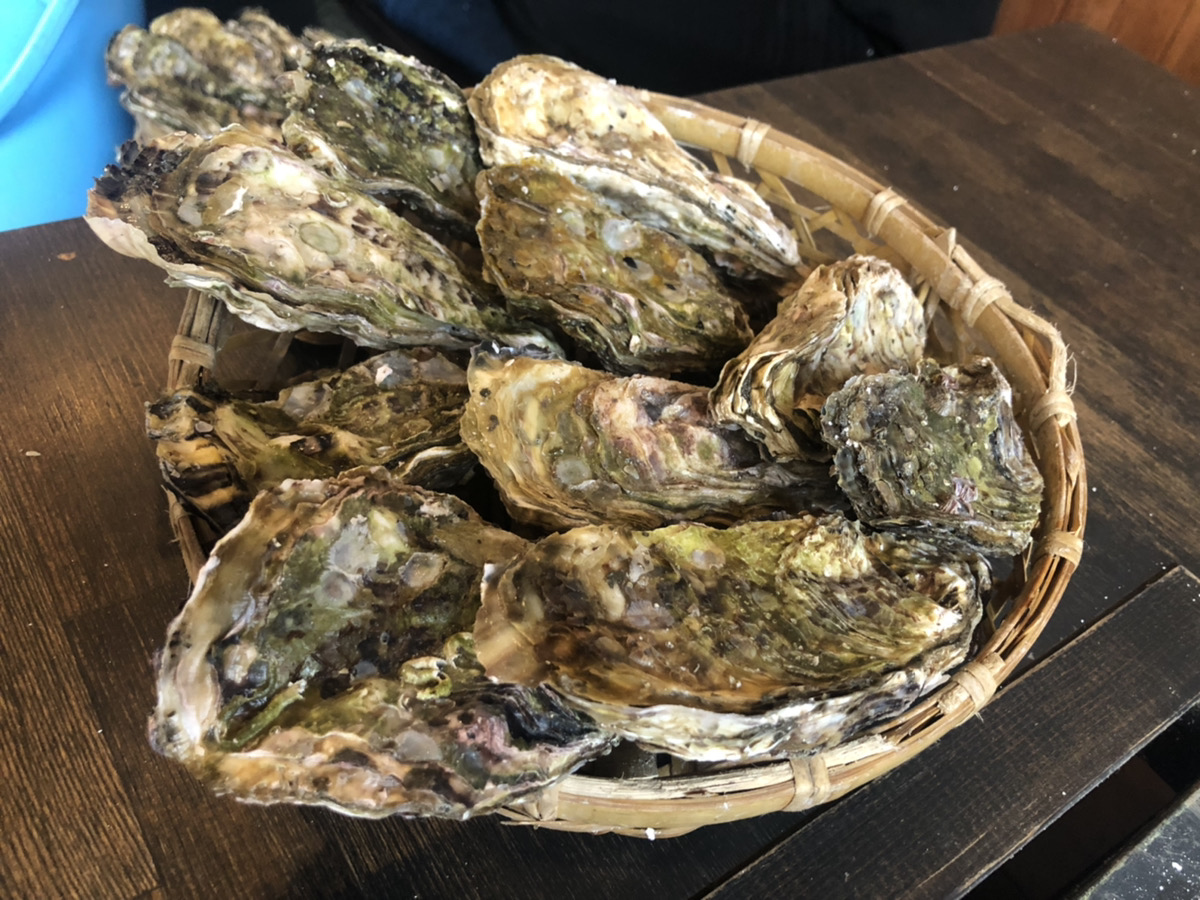
I try it, too.
It is very fragrant as it is grilled on a net.
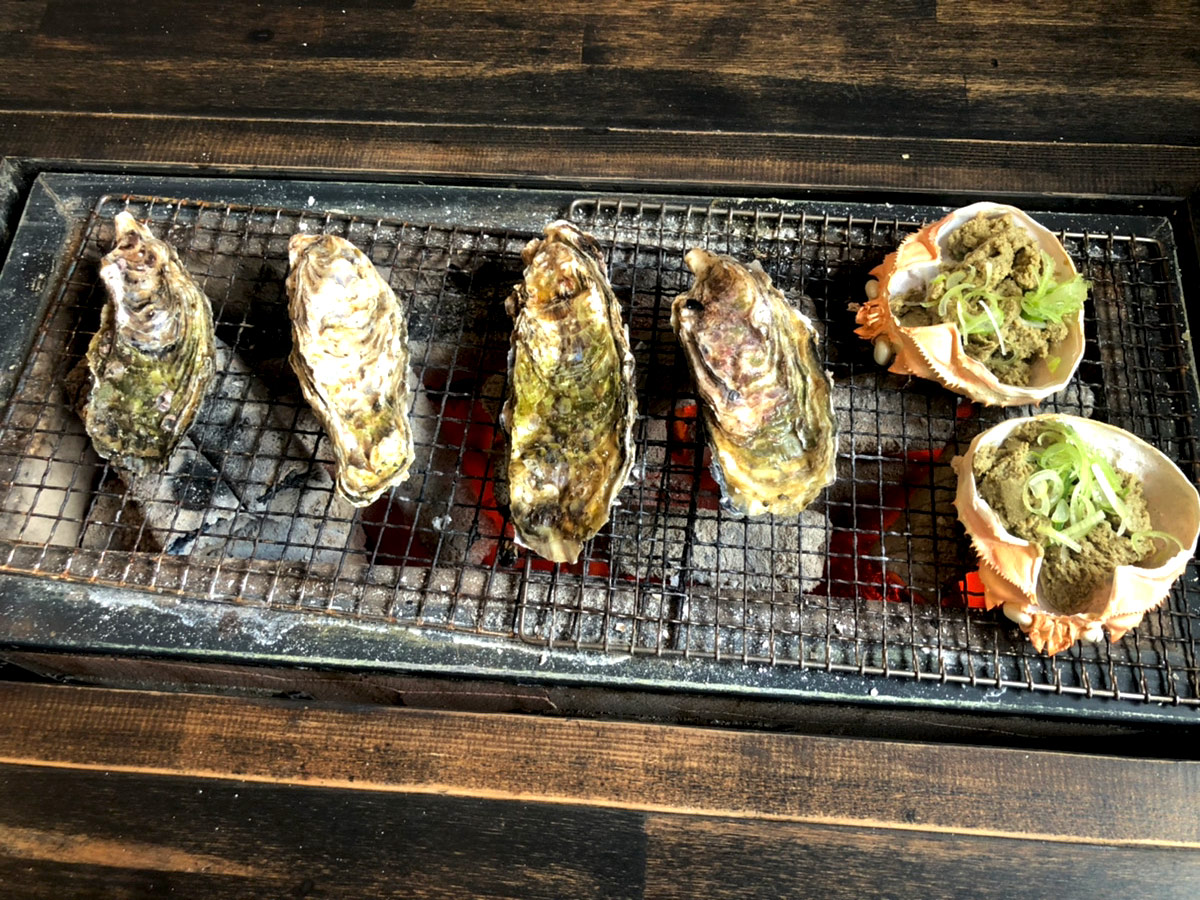
When the oyster shells open a little, it’s time to eat. Let’s eat!
Remove the oyster’s shell by yourself.
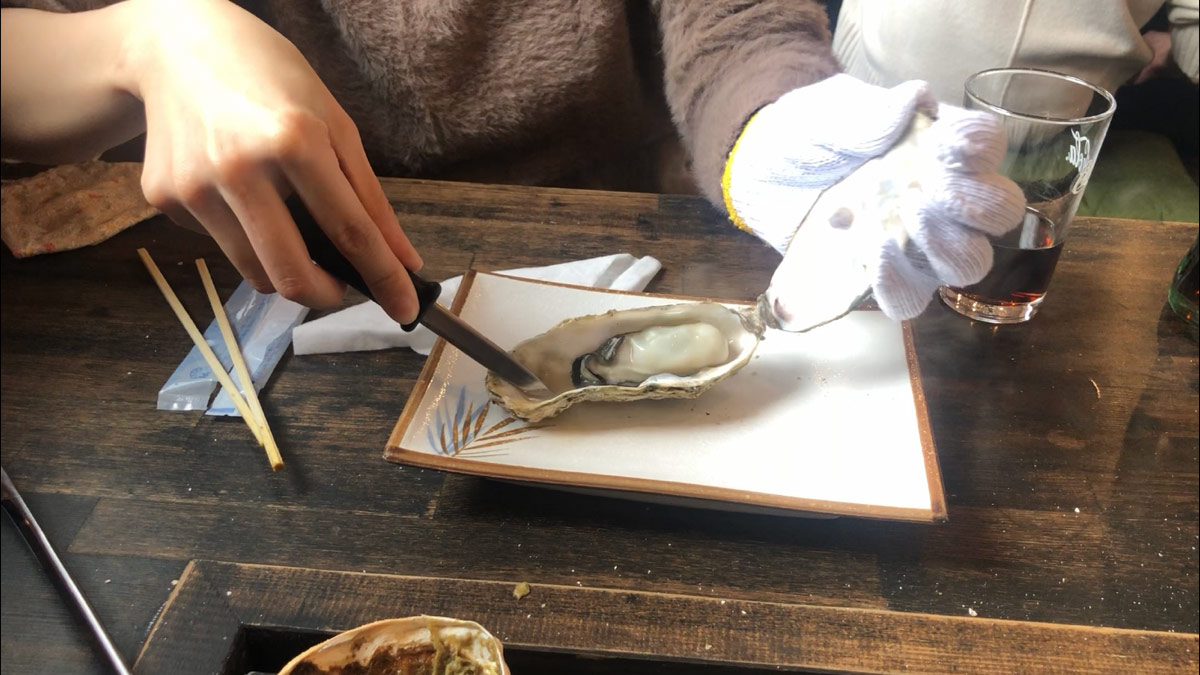

When you eat as it is, you taste the salty. It’s the taste of seawater.
You can drizzle soy sauce, ponzu, or lemon juice over it for a lighter taste. I like it better this way!
Oysters in Japan are in season twice a year!
Oysters in Japan are mainly divided into Pacific oysters, which are in season in winter, and Iwagaki oysters, which are in season in summer.
Iwagaki oyster
The Iwagaki oyster is an oyster native to Japan.
Oysters in season in summer are bigger and juicier than those in winter. They grow slowly over a period of many years.
If you want to enjoy the creamy texture, summer oysters are the way to go.
Magaki(Pacific oyster)
Oysters eaten in winter, on the other hand, are small in size but packed with flavor.
It goes well with liqur made in Japan, such as sake and plum wine.
Oysters are actually produced in many different parts of Japan, and the season varies depending on the restaurant and the land.
Oyster dishes from different places, please try them!






